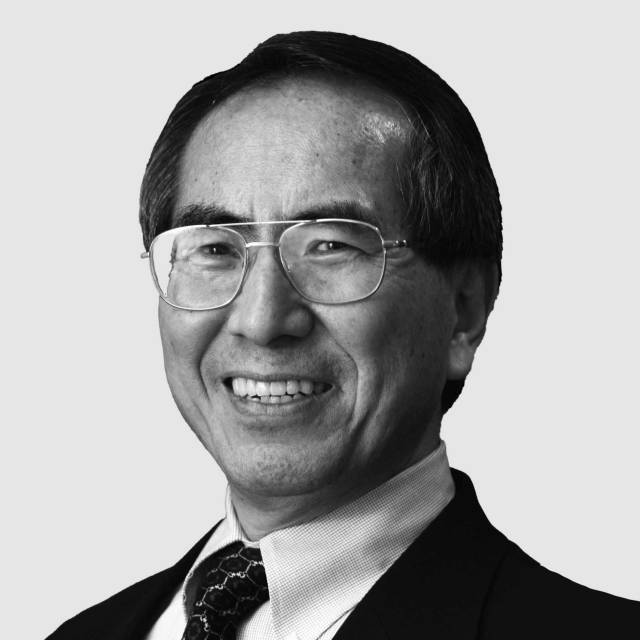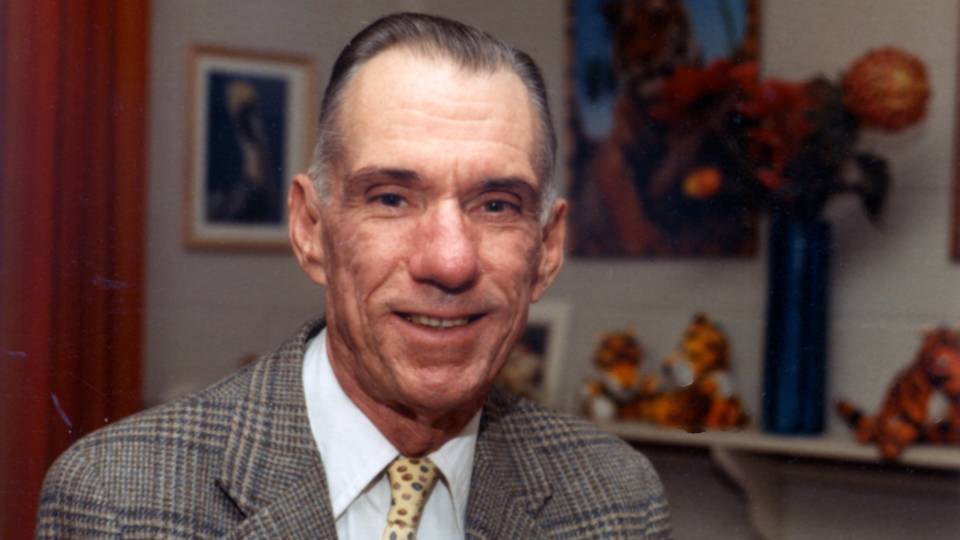Hisashi Kobayashi, whose steady leadership as dean guided Princeton's School of Engineering and Applied Science through a rapid expansion of programs and facilities from the mid-1980s to the early 1990s, died on March 9. He was 84.

Hisashi Kobayashi
Kobayashi, the Sherman Fairchild University Professor in Electrical Engineering and Computer Science, Emeritus, joined the Princeton faculty as engineering dean in 1986 after a distinguished career with IBM at research centers in the United States and Japan. An expert in signal processing and system performance modeling, Kobayashi combined a focus on applied results with a wide range of research interests.
Peter Ramadge, the Gordon Y.S. Wu Professor of Engineering, said that when Kobayashi arrived at Princeton in 1986, he brought a vigorous energy to his role as dean. Always a gracious colleague, Kobayashi nevertheless maintained a laser focus on applications and results.
“He came with industry experience. He came with a broader perspective,” said Ramadge, a professor of electrical and computer engineering. “But he had an academic point of view as well.”
Kobayashi served as dean from 1986 to 1991. A strong advocate for research, Kobayashi played a central role in establishing academic centers in materials science, plasma etching, mathematics for computer science and opto-electronics. Sponsored research increased by about 60% during Kobayashi’s tenure, and corporate gifts grew by 150%. The engineering school also bolstered its academic resources under Kobayashi, with the number of permanent faculty members increasing from 83 to 107 and the undergraduate female enrollment growing from 20% to 25% of the engineering class. The Computer Science building, which famously displays the classic “P=NP?” problem in its brickwork, started construction and opened under Kobayashi’s tenure.
Ramadge said Kobayashi impressed fellow researchers with the breadth of his interests. Among other topics, Kobayashi explored network architecture, applied probability and the Riemann hypothesis. At one point, Ramadge said he visited the library to read Kobayashi’s Ph.D. research because his work covered such a wide area that Ramadge wanted to learn his initial focus. Kobayashi’s work, “Representation of Complex-Valued Vector Processes and Their Applications to Estimation and Detection,” was supervised by Professor John Thomas. Ramadge said Kobayashi often explored pure mathematics but always brought the work back to applications.
“One thing that struck me was that it was obviously meant to be applied to the real world,” Ramadge said. “He had an engineering, application interest.”
Kobayashi was most recognized for his pioneering work in signal processing and decoding that became an industry standard for data storage. After receiving his doctorate in electrical engineering from Princeton in 1967, Kobayashi pursued research for IBM that became known as PRML (Partial Response and Maximum Likelihood). The system, which he published in 1970 and 1971, vastly expanded data storage compared to conventional methods and allowed for information retrieval with far fewer errors. PMRL became the standard used on devices such as hard disk drives and DVDs. Kobayashi later received the 2005 Technology Award of the Eduard Rhein Foundation, one of the highest honors in information technology, for the work.
Brian Mark, professor of electrical and computer engineering at George Mason University, said Kobayashi was fearless in his willingness to take on new challenges, in his professional career and personal life.
Mark, who earned his Ph.D. at Princeton with Kobayashi as his adviser, recalled that after retiring, Kobayashi worked as a consultant and tackled new science and engineering problems. For a while he worked on the Riemann hypothesis, which has to do with how prime numbers are distributed across the number line and is considered one of the greatest unsolved problems in mathematics.
“I was kind of amazed that he would tackle this problem as an engineer,” Mark said, noting that Kobayashi taught himself the MATLAB programming language and approached the problem using both analysis and computation. “Math people would never look at the problem this way, but he got some results and made some progress.”
“His energy was impressive,” Mark said. When the COVID-19 pandemic hit, Kobayashi began using his statistical modeling skills to try to shed light on the virus’s behavior.
Mark co-wrote two textbooks with Kobayashi, “Systems Modeling and Performance Evaluation” and “Probability, Statistics, and Random Processes.”
“He was a very good listener,” Mark said. “He wasn’t locked into one way of thinking. You could see that in his career.”
Although they were a generation apart, H. Vincent Poor and Kobayashi both did their doctoral work under Thomas. Poor, who also served as Princeton’s dean of engineering, said that Kobayashi always maintained a practical approach to his research, looking for applications as well as scientific breakthroughs. He said Kobayashi was always thinking of improvements and new devices.
“I remember him coming to my office one time. He closed the door and then he said, ‘I want to show you something.’ And he wrote on the board some idea that he had, and he said he was going to write a patent on it,” said Poor, the Michael Henry Strater University Professor. “He wanted me to be a witness for it.”
Kobayashi loved music, Poor said, and he and his wife, Masae, were known for holding musical events at their home. Poor said noted classical musicians frequently played for guests. Later in life, Kobayashi himself took up the piano.
Poor said that Kobayashi was a reserved man, who could appear very formal. “But once you got to know him, you realized that he was just very dignified, and he had a great sense of humor.” He said Kobayashi maintained lifelong friendships with students and colleagues from academia and industry.
“He was a real gentleman,” Poor said.
Hisashi Kobayashi was born in Tokyo on June 13, 1938. He received his B.S.E. and M.S.E. degrees in electrical engineering from the University of Tokyo in 1961 and 1963, respectively.
His master’s thesis, “Ambiguity Characteristic of a Coded Pulse Radar,” was supervised by the late Professors Yasuo Taki and Hiroshi Miyakawa. From 1963 to 1965 he worked for Toshiba Electric Company, where he was engaged in research and development of radar. He arrived at Princeton University in 1965 as the recipient of the Orson Desaix Munn Fellowship and received his Ph.D. two years later in August 1967.
In September 1967 Kobayashi joined the IBM Thomas J. Watson Research Center as a research staff member of the Applied Research Department. He worked for IBM at research centers in the United States and Japan for 19 years, during which he served as founding director of the IBM Japan Science Institute, later named the IBM Tokyo Research Laboratory. Kobayashi is listed as an inventor or co-inventor on 14 U.S. patents, half of which were filed at IBM and the remainder at Princeton.
After completing his term as dean, Kobayashi accepted a visiting professorship at the University of Tokyo. He returned to Princeton in 1992 to assume a full-time research and teaching position in the Department of Electrical Engineering (now the Department of Electrical and Computer Engineering). The department’s annual Hisashi Kobayashi Prize recognizes a student for outstanding achievement in the broad field of computing. Kobayashi transferred to emeritus status in 2008.
In addition to the Rhein Award, Kobayashi received the 2012 C&C prize from the NEC C&C Foundation, both for the PRML work and for his pioneering contributions to the development of performance evaluation methodology for computer and communication systems. He also received the 1980 Silver Core Award from the International Federation for Information Processing. He was a fellow of the Institute of Electrical and Electronics Engineers and a member of the Engineering Academy of Japan. Kobayashi received an honorary doctorate degree from Ghent University in Belgium.
This article was prepared in part with information from the Office of the Dean of the Faculty of Princeton University and the University Advancement Office.

